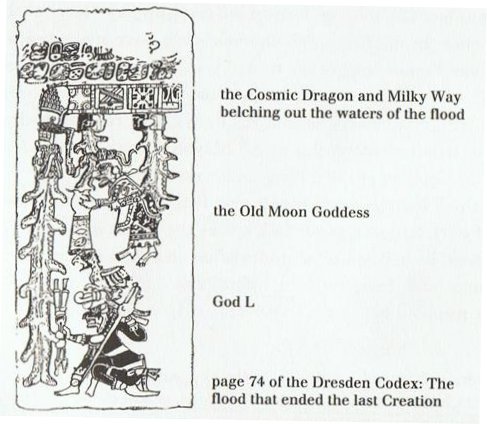The mysterious Seven-Macaw should be studied more. The similarity between Zeus as Jupiter and Seven-Macaw is a clue: 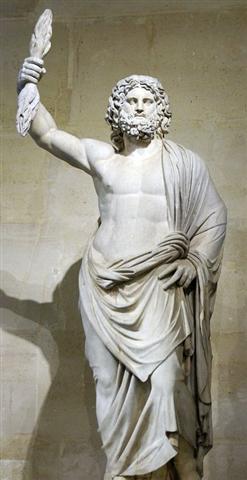 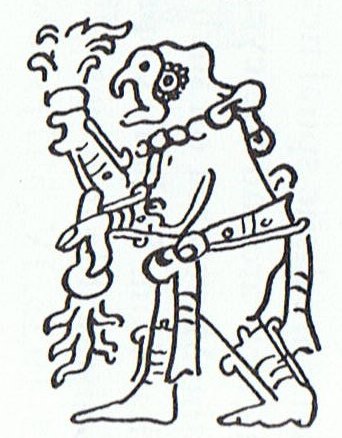 Intuitively I associated Seven-Macaw with the Pleidades.
Once upon a time, they said, there had been a single Pleiades star, so bright that Tane in envy had used Aldebaran (Aumea) and Sirius (Mere) to break him into 6 pieces (Tau-ono). Similarly the beautiful shining tooth of Seven-Macaw (alias Itzam-Yeh) was broken by the Hero Twins: 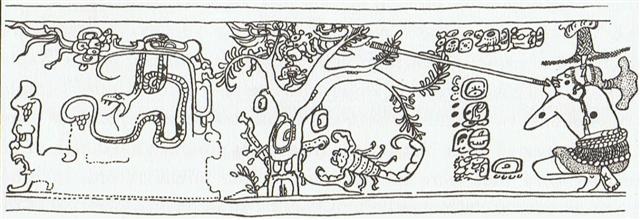 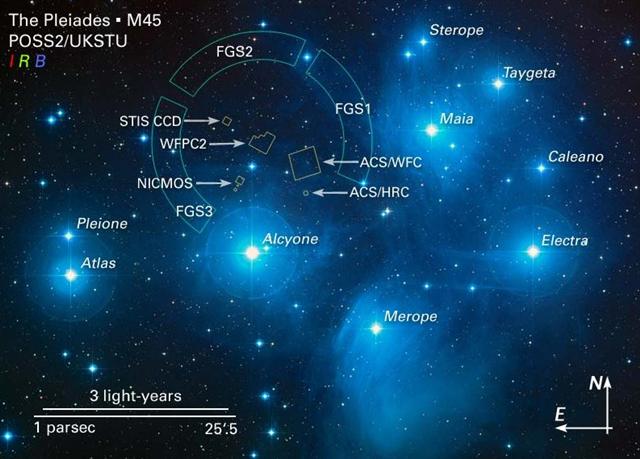 Seven-Macaw has a central great eye surrounded by a number of smaller 'eyes' (mata riki).
I could have been mistaken by perceiving fire flowing out both above (i nika) and below (i raro) - in the latter case the intention could rather have been to illustrate a flow of water. We can compare with the deluge:
... It was 4 August 1968, and it was the feast day of Saint Dominic, patron of Santo Domingo Pueblo, southwest of Santa Fe. At one end of the hot, dusty plaza, a Dominican priest watched nervously as several hundred dancers arranged in two long rows pounded the earth with their moccasined feet as a mighty, collective prayer for rain, accompanied by the powerful baritone singing of a chorus and the beat of drums. As my family and I viewed this, the largest and in some ways the most impressive Native American public ceremony, a tiny cloud over the Jémez Mountains to the northwest got larger and larger, eventually filling up the sky; at last the storm broke, and the sky was crisscrossed by lightning and the pueblo resounded with peals of rolling thunder ... Thunder incorporates both lightning above and rain below. |
